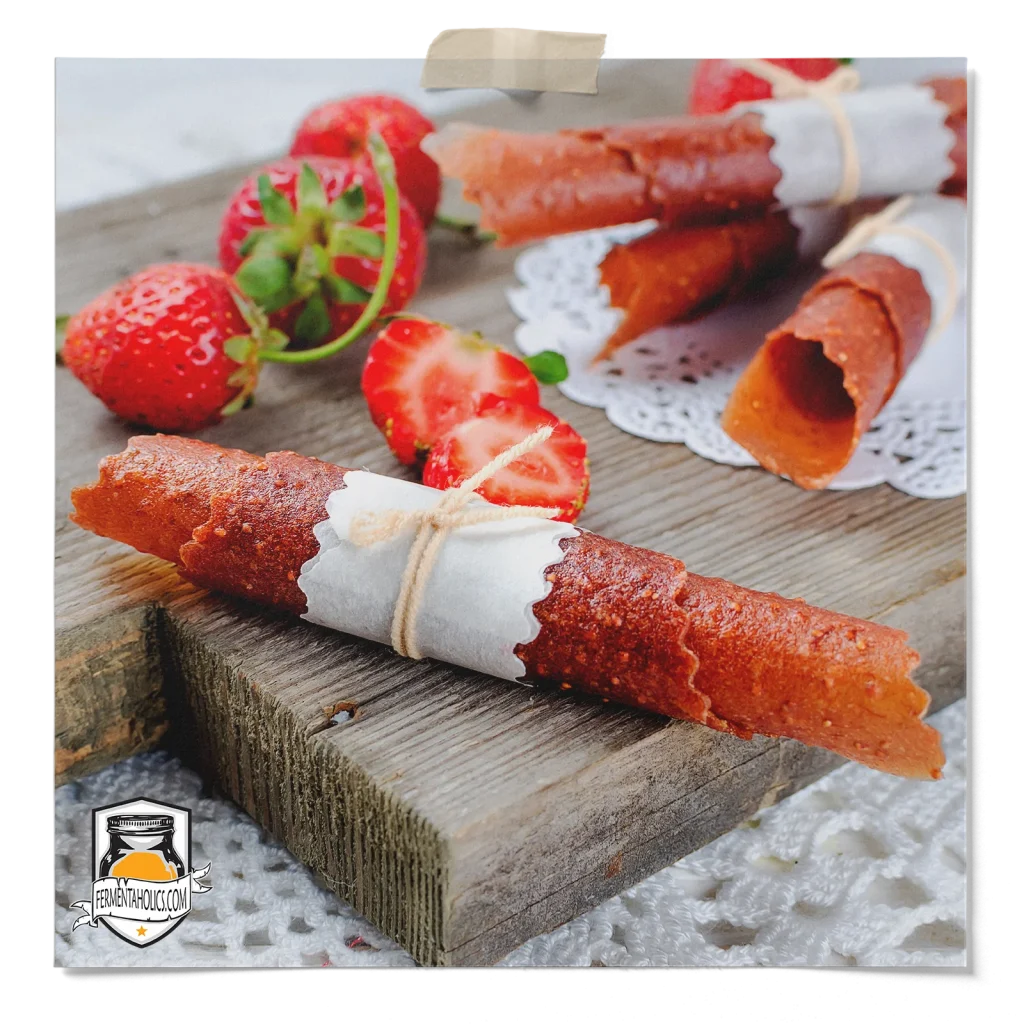
So, you’ve successfully brewed several batches of kombucha. Great! Now a question inevitably arises: What to do with all those extra pellicle growths?
I’ll admit, I was a bit skeptical about eating a SCOBY at first. Mainly because I have tried eating a SCOBY before, plain, and it was…interesting. However, I enjoy experimenting in the kitchen, dehydrating things, and I have no shortage of extra pellicles, so I figured, what the heck? I was pleasantly surprised with the outcome and excited to try different flavor combinations.
Pellicles are made up of bacterial cellulose. Nerdy side note: Cellulose is the most abundant organic compound on earth, and there are only two sources: plants and bacteria. Bacterial cellulose structurally differs a bit from plant cellulose but is still a great source of dietary fiber. Dietary fiber is what feeds the microbes in your gut. That, in combination with probiotics, is a perfect equation for a healthy gut! If you dehydrate your pellicles on a low enough heat (under 110F), you can get the benefits of both the probiotics from the kombucha and the dietary fiber in the pellicle.
10
Minutes8-10 Hours
2 Cups Kombucha Pellicles
1/2 Cup Kombucha
2 Cups Fresh or Frozen Fruit of your Choice
1/4 Cup Honey, Maple Syrup, or Fruit Juice
Optional: These are flavors that you can experiment with depending on your choice of fruit: a pinch of salt, cinnamon, cayenne pepper, clove, pumpkin spice, tamarind, Mexican chili powder, lemon or lime zest
Dehydrator (best option for heat control) or Oven
Parchment paper
Blender
Spatula
In a blender, combine all of the ingredients and blend until a smooth paste-like consistency form.
Line two dehydrator sheets with parchment paper.
Spread half of the mixture on a parchment sheet and spread until it is about 1/4 – 1/8″ thick. Repeat with the other half.
Dehydrate on low until desired texture is reached. Dry time will depend on humidity, temperature, how much liquid, type of fruit, etc.! Start checking after 8-10 hours to get an idea of what your timeline looks like.
Once you’re happy with the texture, remove from the dehydrator and cut into strips, squares, or whatever shapes you want! *note: it’s easier to cut while still on the parchment paper.
Store in airtight containers in the refrigerator.
